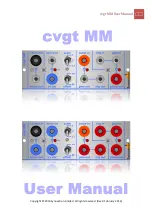
19
VERSION 01/2021
ORDER NUMBER DOC2422004
TOPFINISH Bell 1S ECH
4.2.6 CLEANING AND FLUSHING
Danger due to cleaning and flushing!
Explosion hazard and damage to the device.
De-energize the device electrically.
Pneumatically deactivate paint and flushing agent valves (CA, DM, M and FB).
Deactivating the paint and flushing agent valves relieves the pressure on the device.
Preference should be given to non-ignitable cleaning and flushing agents.
When carrying out cleaning work with flammable cleaning agents, make sure
that all equipment and resources (e.g., collection tank, funnel, transport cart) are
conductive or static dissipative and grounded.
Observe the specifications of the lacquer manufacturer.
Ensure that the flash point of the cleaning agent is at least 15 K above the ambient
temperature or that cleaning is undertaken at a cleaning station with technical
ventilation.
Explosive gases are produced when aluminum comes into contact with
halogenated hydrocarbons. To clean aluminum, do not use liquids containing
halogenated hydrocarbons.
Take measures for workplace safety (see Chapter
).
When commissioning or emptying the device, please note that:
– depending upon the coating product used,
– depending on the flushing agent (solvent) used.
an explosive mixture may temporarily exist inside the lines and components of
equipment.
Only electrically conductive tanks may be used for cleaning and flushing agents.
The tanks must be grounded.
An explosive gas/air mixture forms in closed tanks.
Never spray into a closed tank when using solvents for flushing.
External Cleaning
When cleaning the exterior of the device or its parts, also observe the following:
Relieve the pressure from the device.
De-energize the device electrically.
Disconnect the pneumatic supply line.
Use only moistened cloths and brushes. Never use abrasive agents or hard objects
and never spray cleaning agents with a gun. Cleaning the device must not damage
it in any way.
Ensure that no electric component is cleaned with or immersed into solvent.
















































